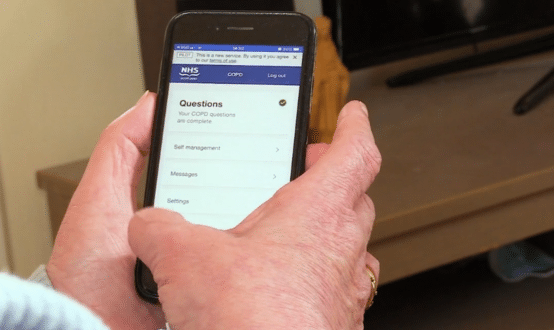All Type 1 diabetes patients eligible for new technology

All patients with Type 1 diabetes will be eligible for new technology on the NHS after new guidance was published.
The flash glucose monitors are wearable gadgets, the size of a £2 coin, that allow people to check their glucose levels more easily and regularly by scanning a sensor that sits comfortably on the arm, in one second.
The gadgets link to an easy-to-use app on your phone, where people can access the data collected by the device. Unlike conventional monitors they enable patients to view patterns over time, not only showing current and previous glucose levels but also predicting what level they can rise to.
Eligible patients are currently able to access their monitors on prescription from their local GP or diabetes team, helping them to better manage their blood sugar levels.
The NHS Long Term Plan has already helped almost three in five people with Type 1 diabetes to access the monitors, with the latest change confirmed by NICE, meaning that everyone with the condition can benefit from the technology.
Professor Partha Kar, national NHS speciality adviser for diabetes, said: “This announcement is the biggest step forward for Type 1 diabetes care in years, allowing everyone eligible to have one of these easy-to-use pieces of tech if they want to – building on the success of the NHS in its rollout so far.
“I am delighted to see NICE endorse the use of this technology. These monitors are a win win – they support diabetes patients to live healthier lives, reduce their risk of hospitalisation while also helping to reduce pressure on NHS services and provide better value for money for taxpayers.”
New research revealed that flash monitoring not only helps improve blood glucose levels in Type 1 diabetes patients, but also has a positive effect on their quality of life.
The NHS Long Term Plan included a target to ensure 20% of people with Type 1 diabetes were benefitting from flash monitors by March 2021 and recent data shows the NHS significantly exceeded that goal, with nearly three fifths already accessing the technology.
Olivia, a 25-year-old from Essex who was diagnosed with Type 1 diabetes aged seven, said: “Growing up with diabetes, I’d never dreamed that a device like a Flash Glucose Monitor, where you don’t need to finger prick to know what your levels are, would be developed in my lifetime.
“When I first started using one, I couldn’t quite believe something so small had such an impact on managing my diabetes. Since using a Flash Monitor, I’ve seen a huge improvement as I can make informed decisions when taking my insulin by looking at trends. But, most importantly, it’s helped me have more confidence and improved my mental well-being.”
The NHS in England currently spends around £10billion a year on diabetes – around 10% of its entire budget, in order to tackle the disease and improve the lives of patients that live with Type 1 or Type 2.
In the last year, Royal United Hospitals Bath launched a diabetes app for Type 1 diabetic children to help ensure they take the correct insulin dose. Chelsea and Westminster Hospitals NHS Foundation Trust also introduced the DBm-Health app to help people better manage diabetes at home.





2 Comments
You don’t need a SmartPhone to run it – it comes with its own reader (and data can be uploaded to the Cloud from there). It might not be ideal but the Libre has had a very positive impact on people with Type 1 Diabetes so I wouldn’t let any lack of capability hold you back.
However their website lists a large number of compatible phones including iPhone, Samsung, Google, LG and Sony. My Samsung Flip3 is not in the list but it works so I would focus on the AndroidOS/iOS version compatability rather than the phone list. https://freestylediabetes.co.uk/landing/smartphone-compatibility-guide.
If you are on about the Freestyle Libre 2, It only supports a limited amount of smartphones. We have 3 Smartphones and the app is not compatible with any of them and I refuse to buy another smartphone just to run it
Comments are closed.